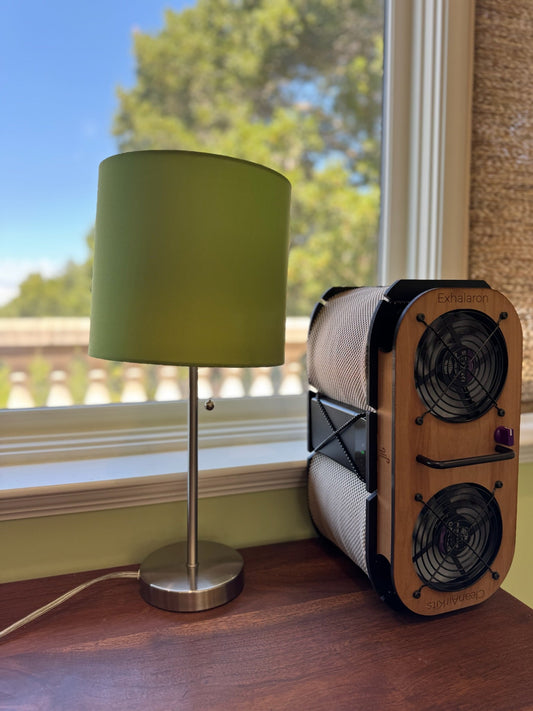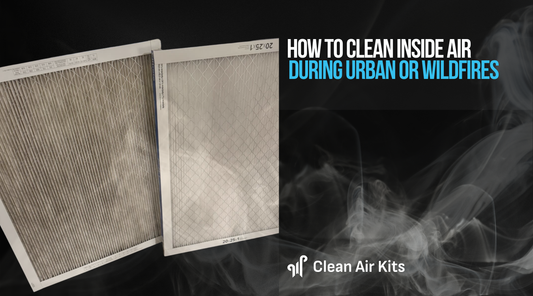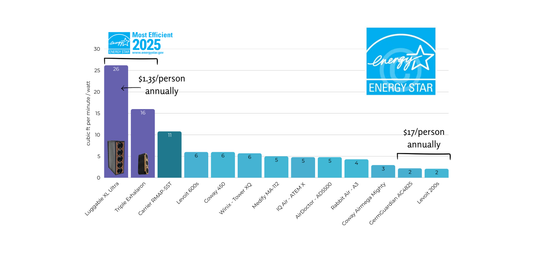

 Your city is on fire. OR--you're nowhere near wildfires, but the wind shifted an unlucky way and it's hazy outside and smells like a campfire inside. Do not get so nostalgic for s'mores that you fail to take action to protect yourself from harmful particulate matter and toxins that are even making it into your home, place of work, or school.
Your city is on fire. OR--you're nowhere near wildfires, but the wind shifted an unlucky way and it's hazy outside and smells like a campfire inside. Do not get so nostalgic for s'mores that you fail to take action to protect yourself from harmful particulate matter and toxins that are even making it into your home, place of work, or school.
What can you do?
-
Outside: Wear an KN95, KF94, or N95 at the very least when you venture outside your home. If you can access an elastomeric respirator with carbon filters, even better.
-
Inside: Focus on filtering your air. Temporarily higher carbon dioxide in your home is okay and better than inhaling smoke particles. So close all your windows and even add tape where you can feel (or smell) air leakage.
-
How often should you replace your air filters? (This applies to HVAC/furnace and portable air purifiers): Change your MERV 12, MERV 13, or MERV 14 filters every 2-4 weeks if you don’t have a monitor and you're in an ongoing smoke event.
or
-
Use an air quality meter instead of deciding based on time. If air quality numbers don’t go down after 10-15 minutes, time to replace the filters.
- What to do after the air quality has improved for good: Always replace your furnace and purifier filters when the event is over and the Air Quality Index stays a low number consistently and the smoke forecast is favorable.
- Are HVAC/furnace filters sufficient for cleaning the air from wildfire AND urban smoke? Sometimes, yes, and sometimes you need to add activated carbon. Filters like Filtrete MPR 1900 (MERV 13) that are used in our kits like Luggable XL Ultra, Tower of Power, Brisk Box, and Aerating End Table do an excellent job at quickly and continuously ridding your air of harmful viruses, bacteria, allergens, and mold spores. But they don't filter toxins and gases (VOCs). For that, we recommend stretching an activated carbon sheet over your MERV 12, 13, or 14 filter to give it a boost and remove VOCs from your air. It will reduce the Clean Air Delivery Rate (CADR) 20%, but we believe that temporary reduction is worthwhile to achieve less toxins and gas from your indoor air.
- Our HEPA purifiers, the Exhalarons, are the exception to this! The double fan Exhalaron and the Triple Exhalaron already have activated carbon embedded in their cylindrical filters. AND both Exhalarons are portable with a power bank or car adapter (sold separately). We take them in our cars even on good outdoor air quality days because cars have terrible air quality by nature. But we NEVER leave home without a portable Exhalaron during wildfire smoke events.
-
How often should you replace your air filters? (This applies to HVAC/furnace and portable air purifiers): Change your MERV 12, MERV 13, or MERV 14 filters every 2-4 weeks if you don’t have a monitor and you're in an ongoing smoke event.
Are you prepared for the next wildfire or urban fire smoke event to strike your home and want to know how to help those who aren't prepared? We recommend donating to the Corsi-Rosenthal Foundation. They're currently sending box fan filters to St. Louis for tornado recovery ("tornado lung" is not something to mess with!) And in January 2025, they funded and built more than 1,000 air filters.
Canadian friends--we recommend purchasing kits from Canada-based North Box Systems.





1 comment
Is there any type of return policy or quality guarantee? What if parts are missing?